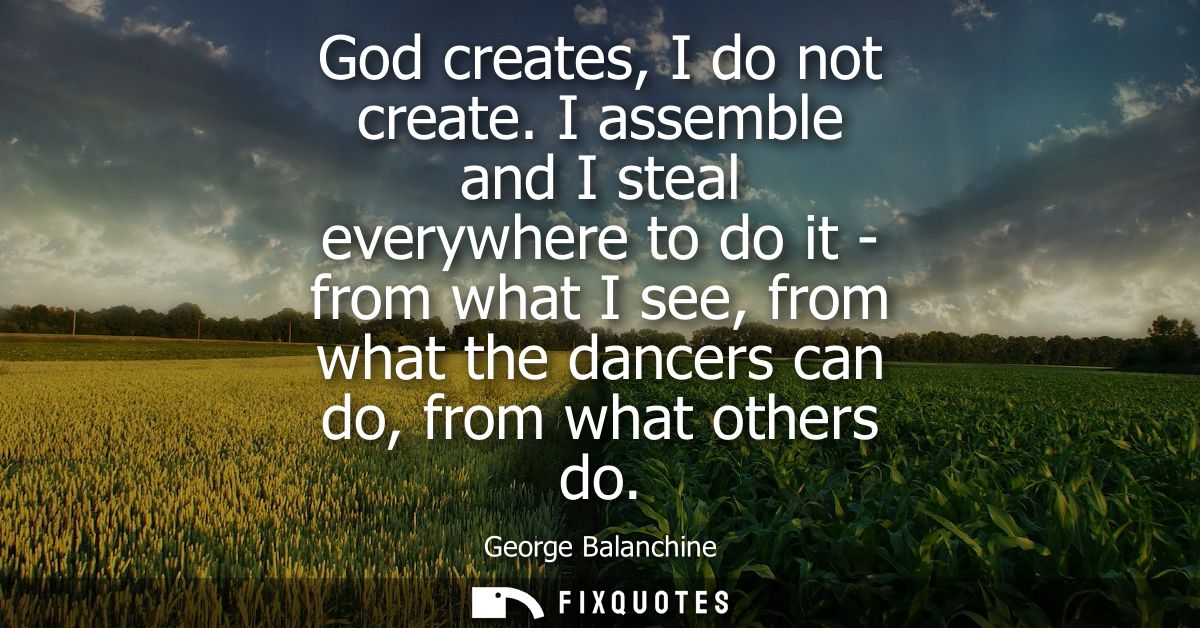"God creates, I do not create. I assemble and I steal everywhere to do it - from what I see, from what the dancers can do, from what others do"
About this Quote
George Balanchine’s statement reveals a profound humility and honesty about the creative process. He refuses the mantle of divine creation, instead likening his work to the acts of assembling and borrowing. The distinction is not merely modesty but an articulation of the collaborative and cumulative nature of artistic invention. Balanchine acknowledges that art does not emerge from a vacuum or singular inspiration; instead, it arises through the gathering of influences, ideas, and observations from a multitude of sources.
He draws from what he sees – the world itself becomes a repository of inspiration, whether it is everyday movement, architecture, or fleeting gestures. He also harvests material from the abilities and uniqueness of his dancers, tailoring movement to their capabilities, bodies, and personalities. This highlights the reciprocal relationship between choreographer and performer, where creativity is a shared endeavor.
Balanchine further admits to “stealing” from others, an echo of the notion attributed to artists throughout history: great art often builds upon the innovations and works of those who came before. By admitting to appropriation, he rejects notions of artistic purity or originality as isolation; instead, he frames creativity as a conversation, a process of synthesis that transcends personal boundaries. This attitude underlines the fluidity of artistic ownership and the inevitability of influence within the artistic community.
The statement also speaks to artistic humility and gratitude. By not claiming to create from nothing but to assemble and borrow, Balanchine pays tribute to the broader tapestry of culture, tradition, and individual contribution that enables art to exist and thrive. In turn, his work participates in the ongoing dialogue of the arts, both shaped by and shaping the environment around him. Ultimately, this perspective champions openness, curiosity, and a deep respect for the multiplicity from which all creative work derives.
About the Author

